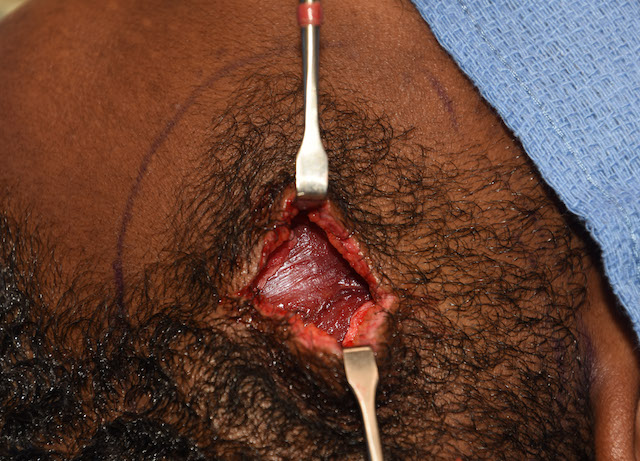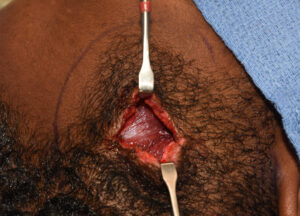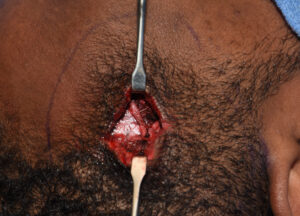Background: The width of the side of the head is controlled by muscle and not bone. This is a revelation for most patients as the belief is that the thickness of the temporal bone is what makes the head wide. But a look at the anatomy reveals that the bone is actually deeply concave by the side of the eye and only becomes slightly convex as it passes above the ear to the back of the head. It is the thickness of the temporal muscle that makes a greater contribution than the bone between the ear and the eye anteriorly and an equal contribution to that of bone above the ear posteriorly.
This recognition of the contribution of the temporal muscle to a wide side of the head is the anatomic basis for the posterior temporal reduction procedure. This highly successful head reduction procedure removes the entire thickness of the posterior temporal muscle to change a convex side of the head shape to a straight one. And it does so without causing any functional restrictions to lower jaw opening and closing.
But when the excess width of the head extends more anteriorly across the concave temporal bone between the ear and the eye, complete muscle removal is neither feasible or practical for width reduction. The muscle is quite thick in the anterior temporal region and also has a more direct role in lower jaw motion. An alternative muscle reduction strategy is needed.
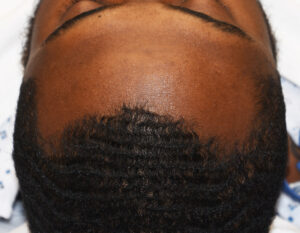
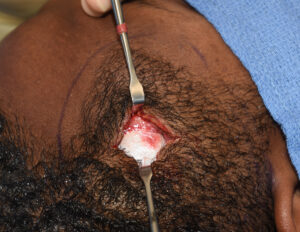

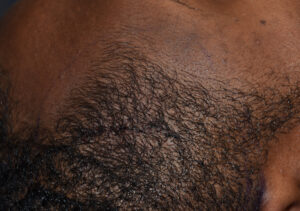
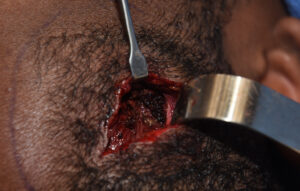
Case Highlights:
1) Anterior temporal muscle reduction, like the posterior temporal muscle, can be reduced by requires different techniques to do so.
2) The anterior temporal muscle must be approached directly and treated primarily by thermal muscle reduction rather than wide excision.
3) Thermal injury to the anterior temporal muscle by electrocautery requires longer term muscle atrophy to see its full effects.
Dr. Barry Eppley
Indianapolis, Indiana

